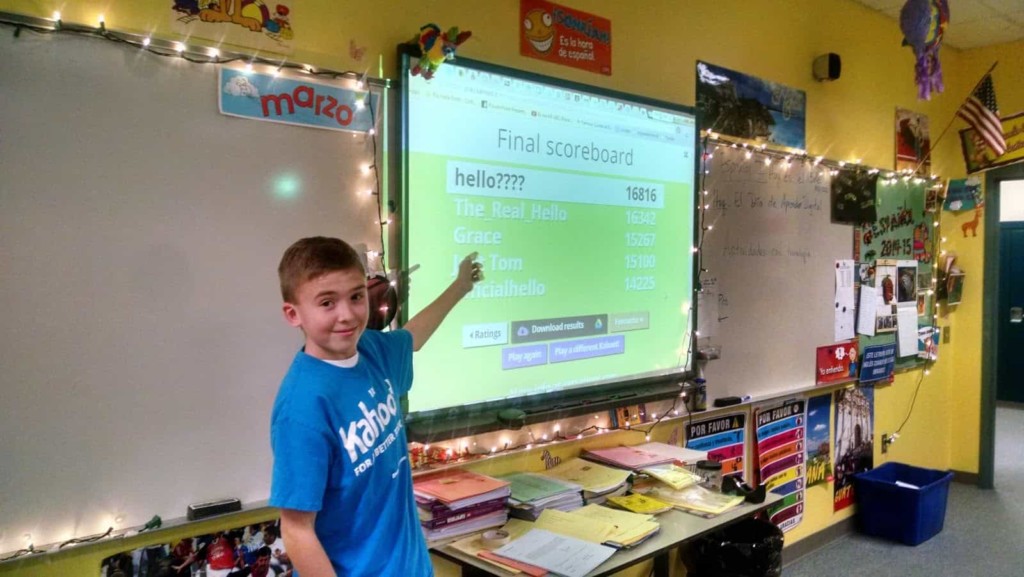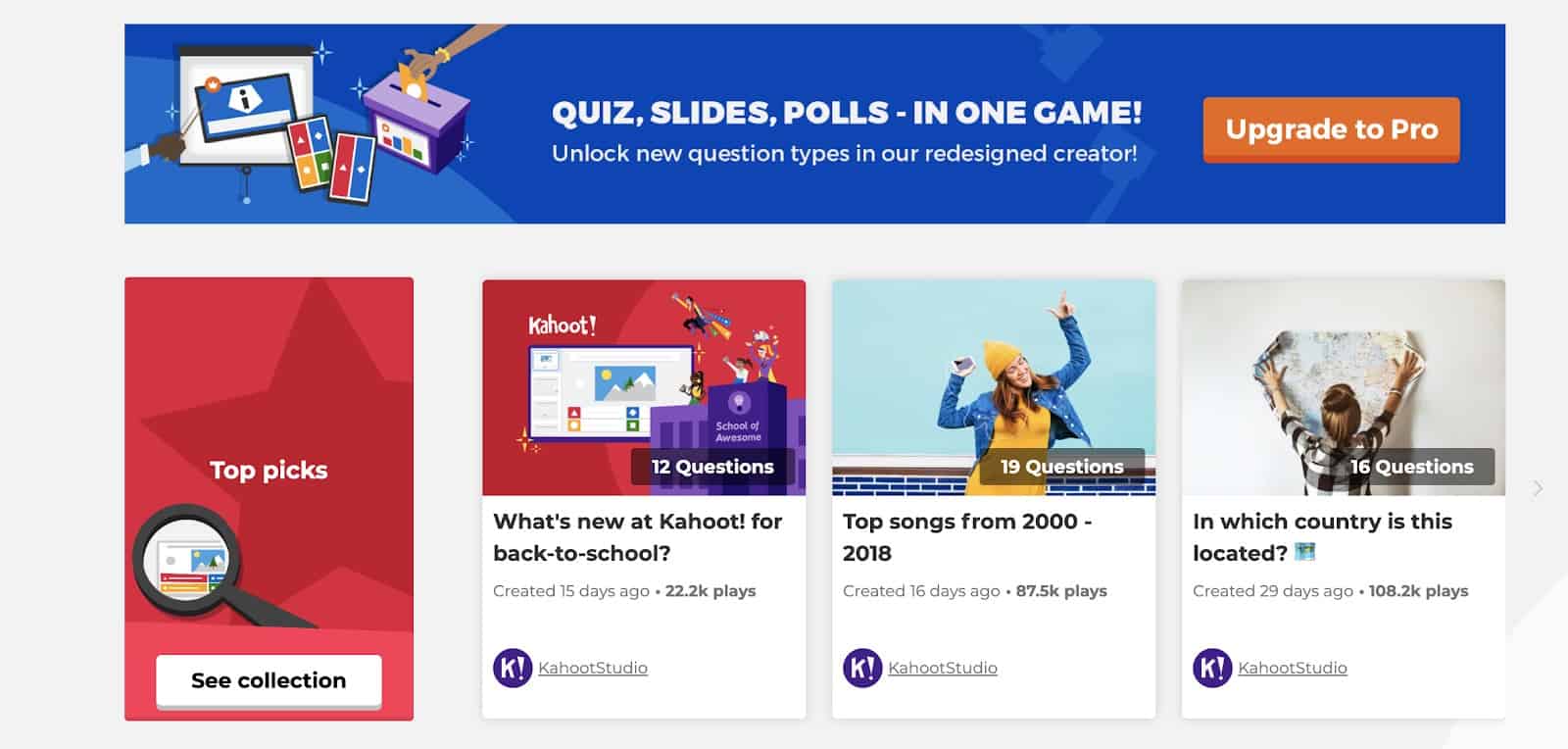Kahoot!: Kid’s Game That All the Fortune 500 Companies Use

By: Tom Vander Ark & Rachelle Dene Poth
Launched in 2013 at SXSWedu, quiz platform Kahoot! was a hit; it spread virally.
Now, more than half of U.S. teachers and students use Kahoot!
But you probably knew that. What you may not know (we certainly didn’t) is that more than 97% of Fortune 500 companies use Kahoot! for employee engagement and training.
And given the explosive education and corporate use, Norway-based Kahoot! has attracted $59 million in investment from the likes of Microsoft and Disney.
While American startups are obsessed with growth, they’d never announce a revenue target. Kahoot!, on the other hand, announced ambitions of reaching $100 million in revenue by 2022.
Most teachers use Kahoot! for free. There are modest efforts to convert schools to a discounted subscription Pro model. There is also a retail model targeting parents. But most of that revenue growth will come from corporate subscriptions for sales, product, and policy training.
Nordic Game Backstory
Back in 2011, five Scandinavian founders saw a gap in student engagement. They wanted to create a platform that would transform the classroom into a game show with the goal of increasing student engagement.
Back then, some U.S. edu-game makers sunk a fortune into heavyweight multiplayer role playing games. Instead, the Kahoot! strategy was lightweight, low bandwidth device-agnostic games which make it easy for teachers to implement and for students to enjoy in the classroom.
With ambitions to be the ‘Nextflix of learning games,’ Kahoot! recently acquired math learning game platform DragonBox and reading platform Poio.
Why Teachers Love Kahoot!
Using Kahoot!, teachers can take a new approach to delivering instruction, personalizing learning and increasing student engagement. With more than 500 million public questions available, teachers can simply search for a specific question and they will likely find that question or a similar one, making the creation of games even easier.
 There are many new features recently shared on August 20 during the Kahoot! Unconference. One new feature that will bring relief to many educators and probably students, too, is auto-save. Many times in class as students were creating their own kahoot quizzes, they forgot to save their work and subsequently lost all of their questions. With a Kahoot! Pro account, teachers can create an entire lesson within the platform. Using the slides feature, teachers can insert one slide between questions as a way to introduce a concept or provide additional content in a gamified environment. Teachers can use the polls feature as a way to gather feedback or for a quick check-in or exit slip. Teachers can share their Kahoot! games with colleagues as well, which adds many more resources for all students.
There are many new features recently shared on August 20 during the Kahoot! Unconference. One new feature that will bring relief to many educators and probably students, too, is auto-save. Many times in class as students were creating their own kahoot quizzes, they forgot to save their work and subsequently lost all of their questions. With a Kahoot! Pro account, teachers can create an entire lesson within the platform. Using the slides feature, teachers can insert one slide between questions as a way to introduce a concept or provide additional content in a gamified environment. Teachers can use the polls feature as a way to gather feedback or for a quick check-in or exit slip. Teachers can share their Kahoot! games with colleagues as well, which adds many more resources for all students.
The new Mix it Up (Pro) feature allows the creator to add different types of questions into the same game, whereas it was only possible to create games with one type of question. In the Mix it up option, question types include quiz, true/false, polls, and slides. Teachers can also create a collaborative kahoot, where students submit a specific question related to a class topic to a spreadsheet. The questions from the spreadsheet are then pushed into a game that can be played in class. Students will enjoy playing with the questions they created.
Some other updates include an increase of the timer to four minutes, allowing for deeper in-class discussion and brainstorming. Questions and answers now have increased character limits, with the increase from 95 to 120 characters for questions, and from 60 to 75 characters for answers.
There are also Kahoot! Studio Collections, which are games created in collaboration with teachers that are ready to play in class. There are currently over 1,000 games available in content areas such as math, ELA, history, and science. There are also more than 1,000 trivia kahoots that can be good options for icebreaker activities and introductions to training sessions.
Why Students Love Kahoot!

Students love using Kahoot!; not only do they enjoy playing, they enjoy creating their own games. When students become creators, they can focus on their specific needs and develop their ability to self-assess while also building technology skills in the process.
When Rachelle introduced Kahoot! to her students in spring 2014, the first day of playing Kahoot! was intense. Students wanted to keep playing and one student actually decided to create his own game to play in his history class the next day. Students were asking to play Kahoot! in each class, every single day. It was after learning about the student-created kahoot that Rachelle first considered the potential for having students create games as a way to build their skills in a more meaningful way.
The new opportunity for students to create games was the start of a transition from students to creators to advocates. Ben Johnson, a ninth grade student at the time, was so impressed with the possibilities for learning that he presented Kahoot! at local and state edtech conferences over a four-year period of time along with some of his classmates. He also had the opportunity to share his take on the benefits of using Kahoot! and its impact on learning by contributing to a blog on the Kahoot! website.
Students enjoy having different ways to practice the content and the best part of these game-based learning tools is that they empower students through more active learning. For teachers, it’s an opportunity to engage students further in the classroom and promote peer collaboration—whether students play individually or as part of a group.
Learn More
Educators can now become Kahoot! Certified. Last year Kahoot! launched its free certification program for educators to become a Kahoot! Certified Educator. Through the Kahoot! professional development program, educators enroll in a course which offers training on all aspects of Kahoot!
Check out Kahoot! With all the corporate usage the company has gained, it’s likely they’ll hit their revenue targets and engage even more people, both young and old.
For more, see:
- Is Personalized Learning the Latest Tool to Increase Student Engagement?
- 5 Classroom Strategies to Support Multimodal Learning
- How Continuous Feedback Fosters Learning
Stay in-the-know with innovations in learning by signing up for the weekly Smart Update.







0 Comments
Leave a Comment
Your email address will not be published. All fields are required.